Do you have a question about the FUTABA 4GWD and is the answer not in the manual?
Precautions regarding exporting the product, adhering to destination country laws.
Futaba is not responsible for unauthorized modifications or replacements.
Statement on FCC rules compliance for the device, subject to specific conditions.
Futaba's participation in the RBRC program for Ni-Cd battery collection and recycling.
Explains symbols used in the manual for warnings and safety precautions.
Precautions to follow during product operation to ensure safety.
Essential procedures that must be followed for safe operation.
Actions that must be avoided during operation to prevent hazards.
Procedures for safe handling and charging of NiCd batteries.
Actions to avoid when handling NiCd batteries to prevent damage or injury.
Avoid storing the R/C system in extreme conditions or near children.
Store the system with discharged batteries in a cool, dry place.
Do not expose plastic parts to fuel, motor spray, waste oil, or exhaust.
Always use genuine Futaba transmitters, receivers, servos, and accessories.
Check the contents of the box against the list provided in the manual.
Identifies and describes the main controls and features of the T4GWD transmitter.
Important precautions to observe when turning the transmitter's power on and off.
Explains how digital trims affect servo travel and prevent linkage binding.
How to adjust the length of the steering and throttle stick lever heads.
Step-by-step instructions for converting the throttle stick to a ratchet system.
Steps for replacing dry cell batteries in the transmitter, with safety notes.
Describes the low battery warning indicator and recommended actions.
Instructions for charging the transmitter's NiCd battery using the special charger.
Explains that the transmitter data does not require a backup battery.
Identifies receiver crystal and connector types.
Identifies servo lead, horn, and mounting flange.
Specifies motor turn limits for the MC230CR ESC to prevent issues.
Describes connections for motor, battery, and receiver on the MC230CR ESC.
Guide for connecting receivers and servos to models.
Crucial safety guidelines for installing components, covering connectors, vibration, antenna, ESC, servos, and noise suppression.
Steps to take before setting transmitter functions, including power-on display check.
Procedure for checking and setting digital trim values to the center position.
Recommended order for setting up functions after installing servos in a car.
Setting the NEUTRAL, HIGH, and BRAKE MAX points for the MC230CR ESC.
How to navigate through different function screens using SEL and CH keys.
Adjusting maximum steering angle and servo operation amounts for each channel.
Adjusting the neutral position of servos for steering, throttle, and other channels.
Reversing the operation direction of servos.
Selecting or changing the model number to load stored model data.
Copying model memory contents to another model memory.
Resetting the currently called model memory to its initial value.
Assigning a three-character name to each model memory.
Adjusting maximum steering angle and servo operation amounts for each channel.
How to adjust the neutral position of steering, throttle, and other servos.
Reversing the direction of operation for steering, throttle, and other servos.
Procedure for selecting a model number and executing the selection.
Steps for copying current model memory to another destination model.
How to reset the current model memory to its default initial value.
Procedure for assigning a three-character name to each model memory.
Method to cancel the reverse function for brake operation only.
Explains overcurrent, heat protector, and low voltage protection circuits.
How the checker LED indicates amp operating states and alarms.
Specifications and ratings for the transmitter, receiver, servo, and ESC.
Information on available optional parts like crystals and batteries.
Details on available crystals for FM and AM modulation modes.
Information on the specific NiCd battery part number for the transmitter.
Table of common problems for transmitter, receiver, and linkage with possible causes and solutions.
Describes the audible alarm and LCD display for low transmitter battery voltage.
Explains the audible alarm and LCD display for data loss or backup errors.
Details on what information to provide when requesting repair service.
Information on how to request warranty service, including proof of purchase.
Precautions regarding exporting the product, adhering to destination country laws.
Futaba is not responsible for unauthorized modifications or replacements.
Statement on FCC rules compliance for the device, subject to specific conditions.
Futaba's participation in the RBRC program for Ni-Cd battery collection and recycling.
Explains symbols used in the manual for warnings and safety precautions.
Precautions to follow during product operation to ensure safety.
Essential procedures that must be followed for safe operation.
Actions that must be avoided during operation to prevent hazards.
Procedures for safe handling and charging of NiCd batteries.
Actions to avoid when handling NiCd batteries to prevent damage or injury.
Avoid storing the R/C system in extreme conditions or near children.
Store the system with discharged batteries in a cool, dry place.
Do not expose plastic parts to fuel, motor spray, waste oil, or exhaust.
Always use genuine Futaba transmitters, receivers, servos, and accessories.
Check the contents of the box against the list provided in the manual.
Identifies and describes the main controls and features of the T4GWD transmitter.
Important precautions to observe when turning the transmitter's power on and off.
Explains how digital trims affect servo travel and prevent linkage binding.
How to adjust the length of the steering and throttle stick lever heads.
Step-by-step instructions for converting the throttle stick to a ratchet system.
Steps for replacing dry cell batteries in the transmitter, with safety notes.
Describes the low battery warning indicator and recommended actions.
Instructions for charging the transmitter's NiCd battery using the special charger.
Explains that the transmitter data does not require a backup battery.
Identifies receiver crystal and connector types.
Identifies servo lead, horn, and mounting flange.
Specifies motor turn limits for the MC230CR ESC to prevent issues.
Describes connections for motor, battery, and receiver on the MC230CR ESC.
Guide for connecting receivers and servos to models.
Crucial safety guidelines for installing components, covering connectors, vibration, antenna, ESC, servos, and noise suppression.
Steps to take before setting transmitter functions, including power-on display check.
Procedure for checking and setting digital trim values to the center position.
Recommended order for setting up functions after installing servos in a car.
Setting the NEUTRAL, HIGH, and BRAKE MAX points for the MC230CR ESC.
How to navigate through different function screens using SEL and CH keys.
Adjusting maximum steering angle and servo operation amounts for each channel.
Adjusting the neutral position of servos for steering, throttle, and other channels.
Reversing the operation direction of servos.
Selecting or changing the model number to load stored model data.
Copying model memory contents to another model memory.
Resetting the currently called model memory to its initial value.
Assigning a three-character name to each model memory.
Adjusting maximum steering angle and servo operation amounts for each channel.
How to adjust the neutral position of steering, throttle, and other servos.
Reversing the direction of operation for steering, throttle, and other servos.
Procedure for selecting a model number and executing the selection.
Steps for copying current model memory to another destination model.
How to reset the current model memory to its default initial value.
Procedure for assigning a three-character name to each model memory.
Method to cancel the reverse function for brake operation only.
Explains overcurrent, heat protector, and low voltage protection circuits.
How the checker LED indicates amp operating states and alarms.
Specifications and ratings for the transmitter, receiver, servo, and ESC.
Information on available optional parts like crystals and batteries.
Details on available crystals for FM and AM modulation modes.
Information on the specific NiCd battery part number for the transmitter.
Table of common problems for transmitter, receiver, and linkage with possible causes and solutions.
Describes the audible alarm and LCD display for low transmitter battery voltage.
Explains the audible alarm and LCD display for data loss or backup errors.
Details on what information to provide when requesting repair service.
Information on how to request warranty service, including proof of purchase.
| Brand | FUTABA |
|---|---|
| Model | 4GWD |
| Category | Remote Control |
| Language | English |
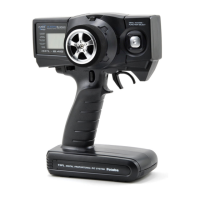
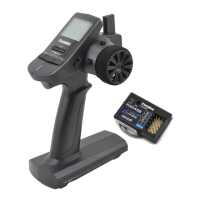
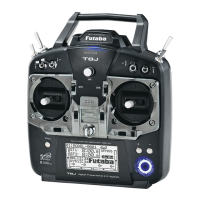
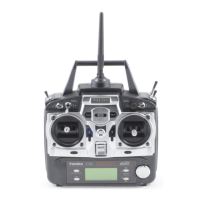
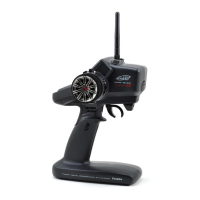
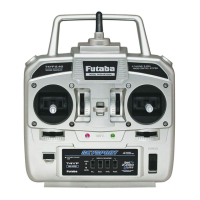
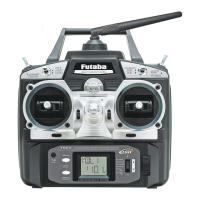
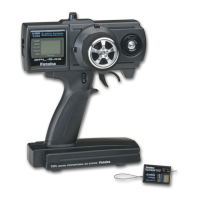
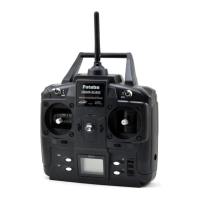
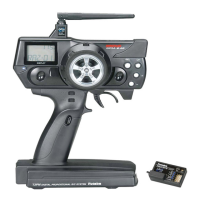
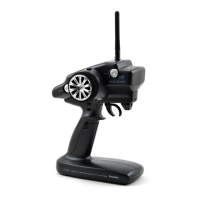
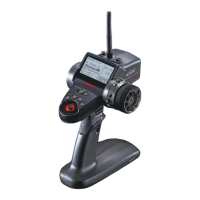
